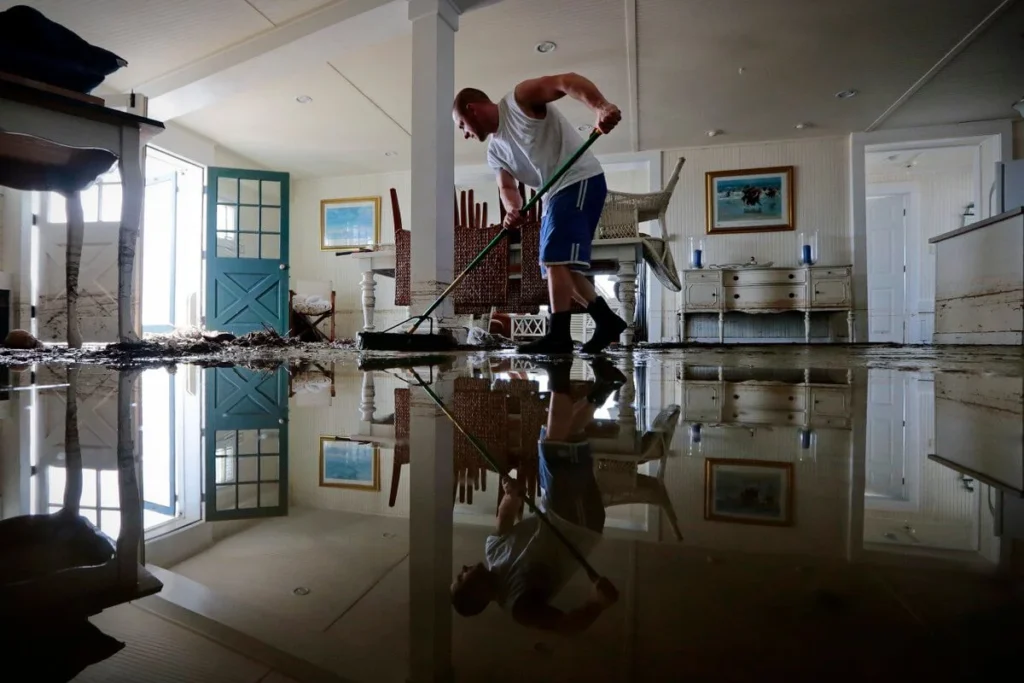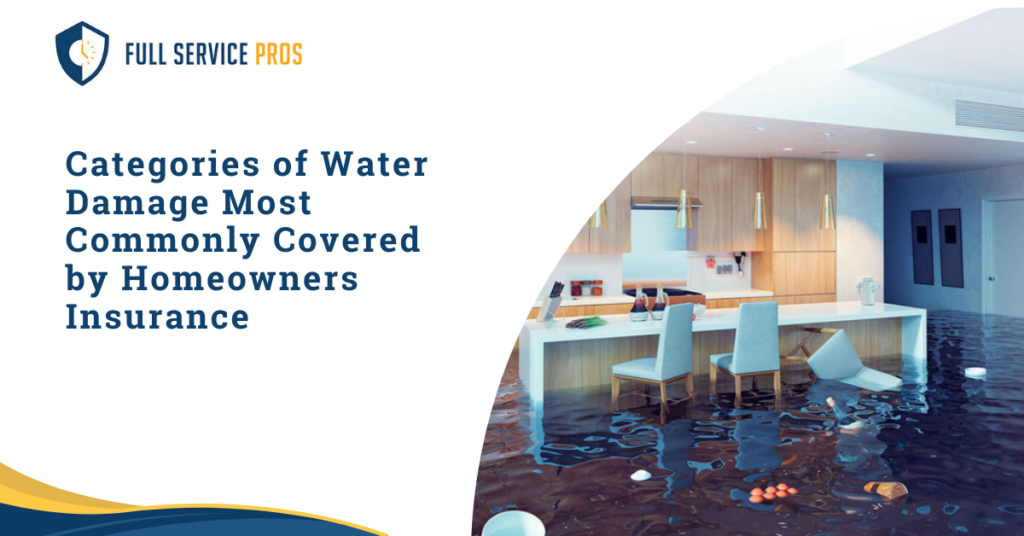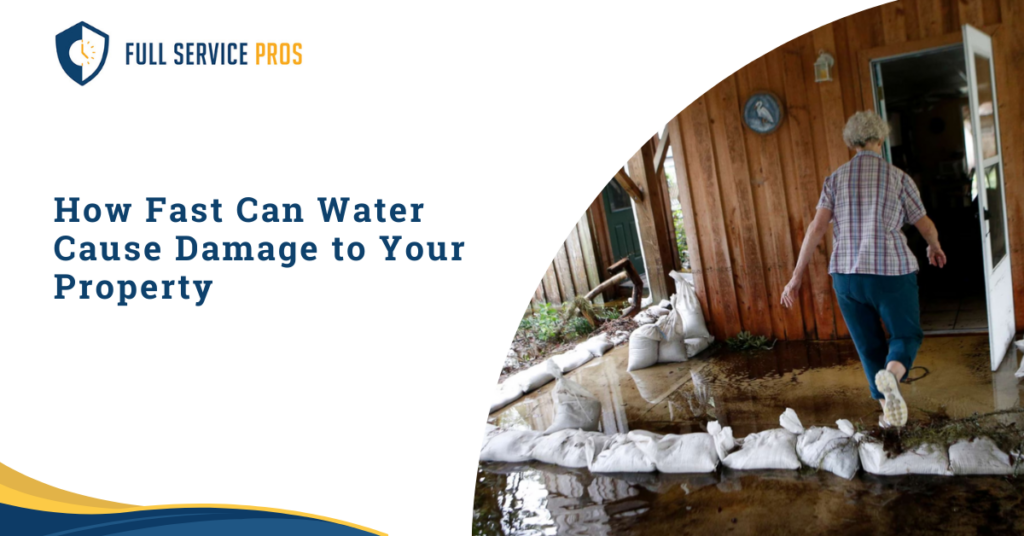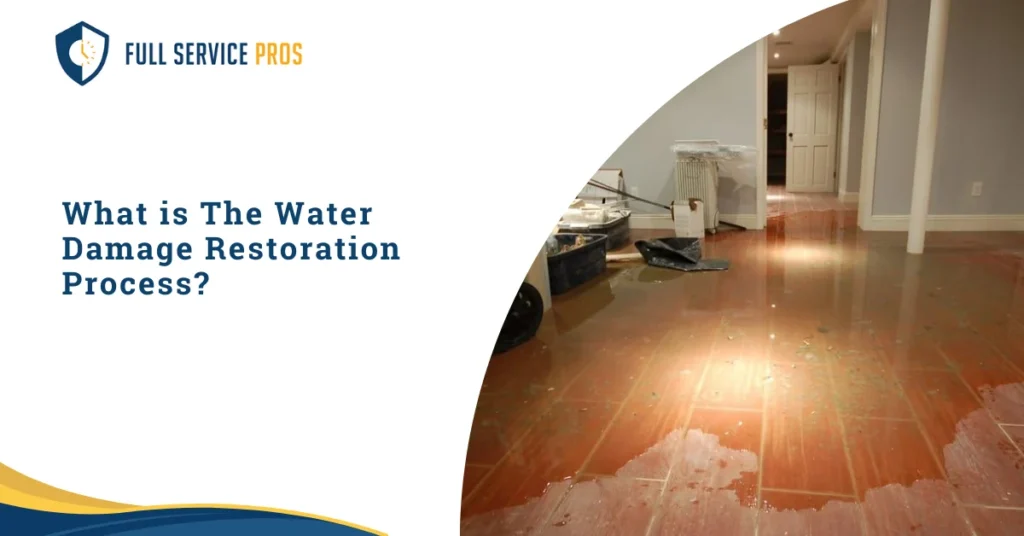Water damage can wreak havoc on any property, whether commercial or residential. Whether caused by broken pipes or natural calamities, water damage can cause serious structural concerns and health risks if not managed quickly and efficiently. In this blog, we will go over the fundamental Water Damage Restoration Steps for revitalizing your area and restoring it to its former splendor.
What are the crucial water damage restoration steps?
Water damage restoration involves a series of crucial steps to mitigate the damage and restore the affected area. First, it’s essential to assess the extent of the damage and identify the source of the water intrusion. Once the source is addressed, the water extraction process begins, followed by drying and dehumidification to prevent mold growth and further damage. Let’s explain the important steps for water damage restoration.
1. Initial Assessment and Inspection
When handling Commercial Water Damage Restoration step one is to evaluate the state of affairs cautiously. You want to discern where the water is coming from and the extreme the damage is. This lets you understand the extent of the hassle and plan your subsequent steps accordingly. Once your water damaged floor repair is accomplished then they can pass directly to the next phase of the healing process.
2. Removing Excess Water
Once specialists have assessed the harm the next step is to remove any extra water. You can use pumps and vacuums to extract water from the affected regions. By casting off the water quickly you can save further damage to the property and reduce the danger of mold boom.
3. Drying Out the Area
After doing away with the extra water, water damaged floor repairs that want to dry out the affected areas very well are important water damage restoration steps. You use unique gadgets like dehumidifiers and air movers to remove moisture from the air and surfaces. This prevents mold boom and guarantees that the location is safe and dry.
4. Cleaning and Sanitizing
Once the location is dry it’s time to ease and sanitize the affected surfaces. This enables the casting of any microorganism or mildew that could have begun to develop. You can use cleaning sellers and disinfectants to ensure the location is easy and safe for habitation.
5. Mold Removal
If mold is present, you want to put it off quickly and correctly. Mold may harm your health and cause similar damage to the property if left untreated. You can use specialized techniques and gadgets to get rid of mildew adequately and prevent it from returning.
6. Repairing and Restoring
Sure, after eliminating the mildew and cleaning, we move on to repairing and restoring the damaged areas. This involves replacing drywall, floors or other materials affected by the water. We aim to restore the property to its pre-damage condition quickly and efficiently.
7. Monitoring and Documentation
Throughout the restoration system, you closely monitor the affected regions to ensure everything is going according to plan. You can use moisture meters and different gear to display moisture degrees and ensure the place remains dry. You also preserve targeted facts of the recovery method for coverage functions and future reference.
How to Prevent Commercial Water Damage Restoration
- Regular Inspections: Schedule inspection with water damaged floor repair for ordinary checks of your commercial property. Look for water damage in areas like the roof, plumbing structures, basements and around home windows and doors.
- Maintenance Checks: Keep your plumbing systems in the right form by inspecting them regularly. Replace antique or rusty pipes and furnishings directly.
- Roof Maintenance: Ensure your roof is in desirable condition. Regularly inspect it for issues like broken shingles or flashing, and remove any debris that could cause leaks.
- Gutters and Downspouts: Clean your gutters and downspouts regularly to prevent clogs. This helps water float away from your construction nicely. You might want to install gutter guards to stop leaves and other particles from building up.
- Landscaping: Grade your landscape so that water flows far from your construction. Make positive sprinklers positioned to avoid water pooling around your own home.
- Sealant and Waterproofing: Seal cracks and gaps in walls, windows, and doorways to keep water out. Consider waterproofing areas like basements for extra safety.
- Sump Pump Maintenance: Test your sump pump regularly to ensure it works. Consider getting a battery backup so it keeps working throughout strength outages.
- HVAC Systems: Check your heating and cooling systems for leaks and status water. Keep drip pans clean and drain lines clear.
- Emergency Response Plan: Have a plan in location for handling water damage floor restoration in emergencies and tell them Why Water Damage Floor Repair is Essential. Train your team of workers on what to do to limit damage.
- Insurance Coverage: Review your policy to ensure it covers water damage. You may need extra coverage for positive dangers.
- Document Management: Keep facts of all maintenance and repairs related to water damage prevention. This helps with insurance claims and future preservation.
If you want to book a consultation with a professional for the best services for water floor damage, whether for your residential or commercial project Full Service Pros is the top-notch choice. Contact us and get the best and most reliable services.
FAQs
How long do water damage restoration processes usually take?
Restoring water damage can take different amounts of time depending on how bad it is and what the property needs. Small fixes might only take a few days, but bigger ones could take weeks. Make sure to talk to a good repair company to figure out how long it will take for your situation.
Can I fix the water damage myself or call a professional?
You might handle water damage on your own for small issues. But it’s best to hire pros for big damage, especially in commercial places. They know what they’re doing and have the right tools to fix things properly, reducing future problems.
What shows water damage to floors and how do I fix it?
Water damage to floors looks like warping, discoloration, and mold. To fix it, dry and clean the area well to stop mold and more damage. You might need to replace damaged parts or refinish the floor to make it look and work like before.








